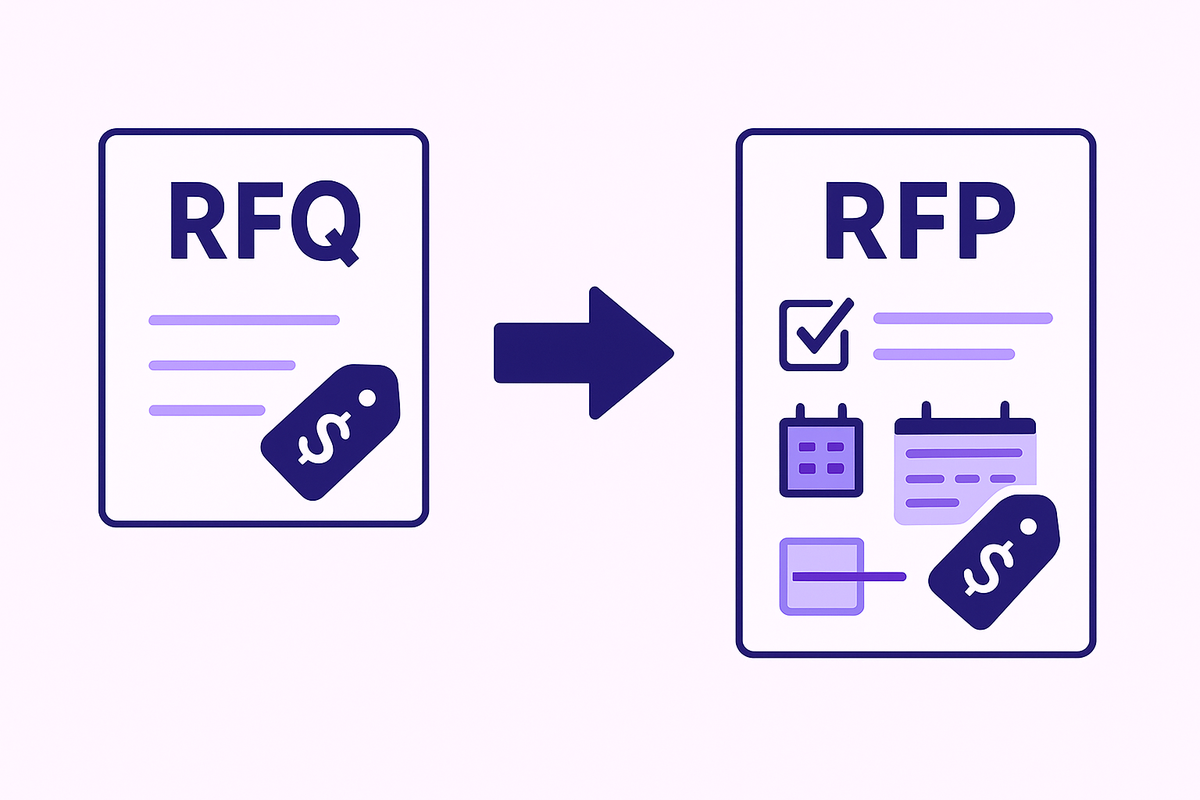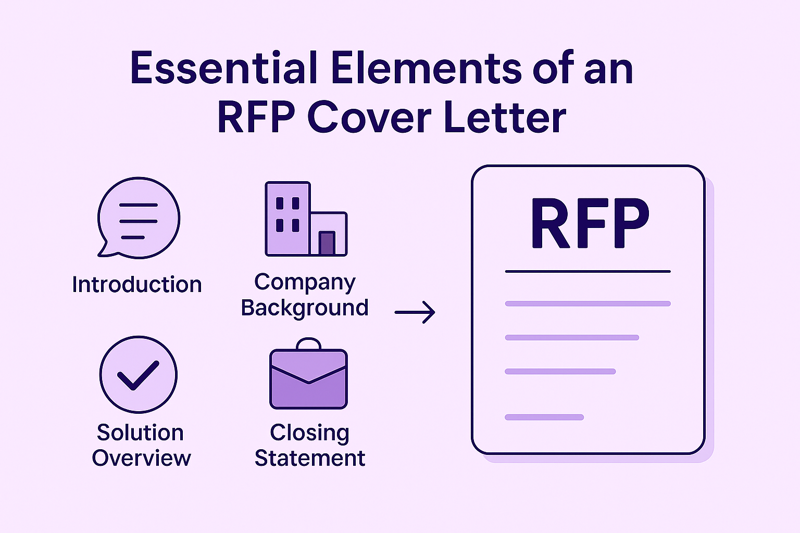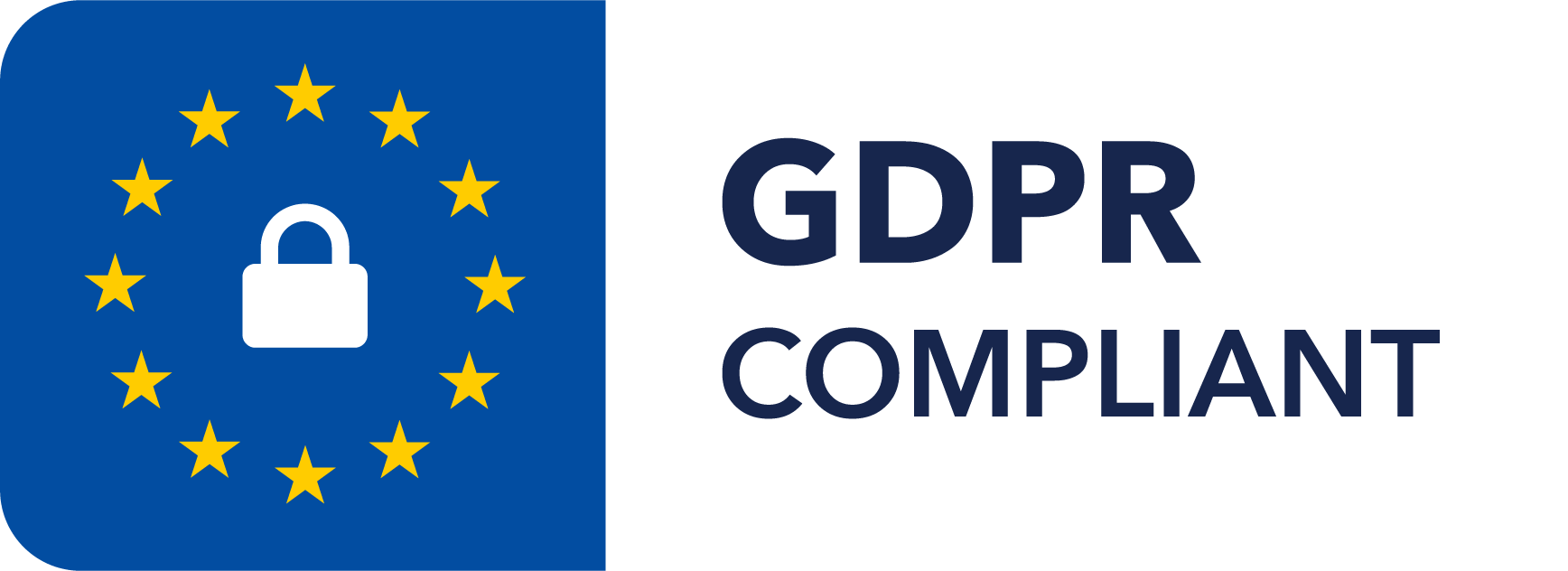RFP vs RFQ: Key Differences & How to Respond to Each
July 31, 2025
By
Evie Secilmis

RFP vs RFQ: How to Choose the Right Request
What Is an RFQ (Request for Quote)?
An RFQ is used when specs are clear and fixed, and the decision is primarily price-driven. Ideal for standardized goods/services and fast comparisons.
Include in an RFQ:
- Specifications (models, dimensions, materials)
- Quantities (enables volume pricing)
- Delivery requirements (dates, locations, SLAs)
- Commercial terms (payment, warranty)
When to use: commodity purchases, repeatable services, apples-to-apples vendor comparisons.
→ Template and guidance: What Is an RFQ? Meaning, Use & Sample Template
What Is an RFP (Request for Proposal)?
An RFP is for complex initiatives where you’re evaluating solution quality, approach, implementation, expertise, and price—not just cost.
Include in an RFP:
- Scope, objectives, constraints
- Proposal guidelines (format, deadlines)
- Evaluation criteria (weights for solution, experience, cost)
- Budget expectations (if relevant)
- Company context and stakeholders
When to use: integrations, customization, change management, or where creativity/strategy matters.
→ Foundations and structure: Request for Proposal 101 Guide
RFQ vs RFP (Key Differences)
When to Use Each (Examples)
- Use an RFQ: Buy 200 monitors with known specs and delivery deadline → choose the most cost-effective compliant quote.
- Use an RFP: Implement a CRM with data migration, SSO, training, and support → evaluate methodologies, timelines, team experience, and TCO.
For faster creation and higher consistency, see How to Streamline Proposal Responses with AI.
Writing a Strong RFQ (Checklist)
- Define specs and quantities precisely
- State delivery windows and service levels
- Publish payment/warranty terms
- Shortlist qualified vendors; set a Q&A window
- Use a uniform response format for easy comparison
→ More detail: RFQ Meaning, Use & Sample Template
Writing a Strong RFP (Checklist)
- Clarify goals, success metrics, constraints
- Share tech stack and dependencies
- Provide structure, page limits, and deadlines
- Publish scoring criteria and weights
- Invite questions; share answers to all vendors
→ Deep dive: Request for Proposal 101 Guide
Improve Outcomes (Buyers & Vendors)
- Buyers: Match the document to the job (RFQ for price; RFP for solution). Start upstream: Preliminary Sales: Why It Matters.
- Vendors: Qualify hard, mirror buyer language, and highlight measurable outcomes. Raise your close rate: Maximizing Your RFP Win Rate.
Automate What Slows You Down
Teams use Iris to:
- Auto-answer repeat questions from an approved library
- Collaborate across sales, security, and legal with audit trails
- Keep content current and compliant for RFPs and questionnaires
→ See also: What Is Security Questionnaire Automation?
RFP vs RFQ: Frequently Asked Questions
How do I decide between issuing an RFQ or an RFP?
Use an RFQ when requirements are fixed and the decision is primarily price-driven. Use an RFP when you need to evaluate approach, implementation, risk, and total cost of ownership in addition to price.
Can I run an RFI before an RFP or RFQ?
Yes. An RFI helps you understand the market and refine requirements so you can choose the right path: RFQ for standardized purchases, RFP for complex solutions.
What sections are essential in a strong RFQ?
Precise specifications, quantities, delivery requirements, commercial terms (payment, warranty), a uniform response template, and a clear Q&A window.
What sections are essential in a strong RFP?
Scope and objectives, proposal guidelines, evaluation criteria with weights, technical context and dependencies, timelines, and budget parameters (if applicable).
How do evaluation criteria differ between RFQs and RFPs?
RFQs weight price and compliance most heavily. RFPs weigh solution quality, methodology, team expertise, timeline, risk, and price.
When should vendors no-bid an RFP or RFQ?
No-bid when you lack required capabilities, timelines are unrealistic, or success criteria are misaligned. Focus effort where you can win and deliver value.
How does AI help with RFQs and RFPs?
AI accelerates drafting, finds approved answers, enforces consistency, routes questions to SMEs, and tracks approvals—reducing cycle time and manual errors.
What metrics should buyers and vendors track?
Time-to-first-draft, total cycle time, reuse rate of approved content, review touches per document, win rate, and post-award delivery accuracy vs. proposal.
Key Takeaways
- Match the document to the job: RFQ for fixed specs and price comparisons; RFP for complex solutions and methodology.
- Structure drives outcomes: Clear sections and scoring criteria produce faster, fairer, and more defensible decisions.
- Use an RFI upstream: Clarify requirements and shortlist vendors before issuing an RFQ/RFP.
- Standardize templates: Uniform response formats make evaluation faster and reduce vendor confusion.
- Measure what matters: Track cycle time, reuse rate, review touches, and win rate to prove ROI.
- Leverage automation: AI and governed content libraries cut rework, improve accuracy, and speed approvals.
Share this post
Link copied!




















